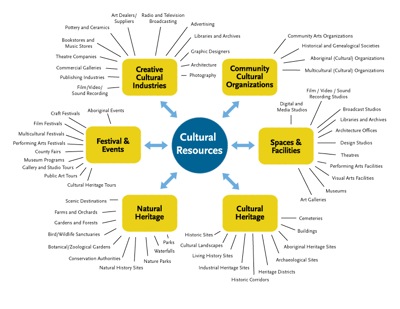Using the Community Food Toolkit
i. Getting Started ii. Visioning Exercises iii. SWOT Analysis and Asset / Gap Mapping
iv. Case Studies
Start with our blank SWOT table template (pdf 750 kB)
 Getting from the present to the future – what you have and what you need
Getting from the present to the future – what you have and what you need
The next step is to establish where you are and to get a handle on your baseline resources. It is important to explore community resources, both strengths and weaknesses. Defining your existing capacity and gaps will allow you to see more clearly what you have to offer and where you need to develop more resources.
Many people are familiar with and use a SWOT (Strengths, Weaknesses, Opportunities, and Threats) analysis while others prefer to use an asset-gap analysis. A description of both techniques follow, but again, this is what we have used and you may have other approaches you prefer to answer these questions. The important thing is to establish a realistic, well bracketed, clearly defined inventory of what you have and what you need.
A Strength, Weaknesses, Opportunities, Threats (SWOT) analysis allows your community to think about its capacity for change. Your SWOT assessment will give you a baseline to plan from and refer back to so you can monitor your progress, deal with your challenges and chart your successes. By first developing your vision and now conducting a SWOT (or comparable assessment) you are beginning to develop a strategy and the tools needed to create food system change in your community.
Use our blank SWOT table template (pdf 750 kB) to organize your meeting(s).
To help get started, here are some ideas about what could fit into each category.
Strengths originate or are found within your community of food. They help you achieve your objectives. For example, you may have community gardens or a farmers’ market in your community, or perhaps you have good community networks.
Weaknesses also originate from within your food community. These are the things that make it difficult to get things done. For example, you may have to rely too heavily on volunteers, you may not have enough funding, a lack of vision or there may be regulations that present challenges.
Opportunities exist outside your food community. These are attributes of the environment external to your organization or network that help you to accomplish your objectives. For example, there may be a local institution interested in buying sustainable, local food or a community group looking for partners.
Threats also exist outside your existing food community. These are factors external to your organization or network that inhibit or prevent you from accomplishing your goals. These could include a lack of farmers or eaters aware of the benefits of local, sustainable food or the need for local processors.
Asset-gap mapping
Similar to a SWOT analysis, asset mapping allows you to benchmark your existing resources. It is founded in a livelihoods approach so asks you to determine your natural, physical/infrastructure, human, social and economic resources (Figure 3). Each kind of asset (also referred to as ‘capital’) is elaborated as follows:
Natural resources: This describes your environmental and ecological assets and can include, but is not limited to your waterways, air quality, green spaces and biodiversity. You may space for community gardens.
Physical resources: This is the infrastructure in your community and can include roads, hospitals, schools, and waterworks among other assets. Perhaps you have a food processing facility in town.
Human resources: These are the people living in your community and what they know. This would include, different demographic groups (age, gender, ethnicity), skills or labour specializations for example, a community college or high school that graduates people with cooking skills.
Social capital: These are the connections and networks where you live. For example, there may be people in your community who have developed links between farmers and a hospital or long-term care facility.
Economic resources: These are the financial resources in your community and includes economic development offices, business associations or credit unions.

Figure 3: Sample map from an asset mapping exercise (Source: http://www.georgianbaymappingculture.com/cultural-mapping/)
Mapping the way forward
Now that you have a better sense as to where you are heading and what tools you have to get there, you can start to map out a plan. It is important to remind yourselves as you go through these exercises that there is value in the:
* process of having these meetings as they help to build community, and
* outcomes as these will be tangible results of your efforts together.
The first, most practical step is to identify as many initiatives as possible to move you from where you are in the direction of your vision. The case studies will hep you brainstorm practical ideas but here are some questions to get you started:
- What are the projects that make sense in the short, medium and long-term? Community gardens can be stepping stones to bigger projects. Start with the low hanging fruit and work towards the more complex goals. Remember, working together helps to build community capacity whether or not you accomplish anything more tangible in the short-term.
- Set concrete objectives with timelines. Ensure you have people who are willing to commit their time to make projects succeed. Identify the people who want to manage and lead the projects. You will also need to identify the resources you need to get started (funding, people, garden tools, access to water, vehicles, store front). The case studies have specific examples and useful ideas in answer to many of these questions.
- Celebrate your accomplishments. The more fun you have, the more engaged and wider the the circle grows.


